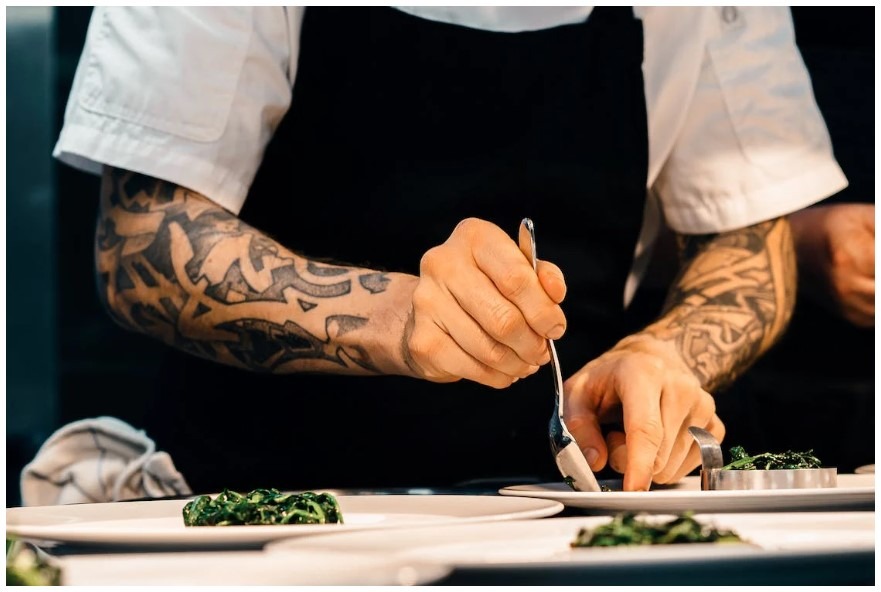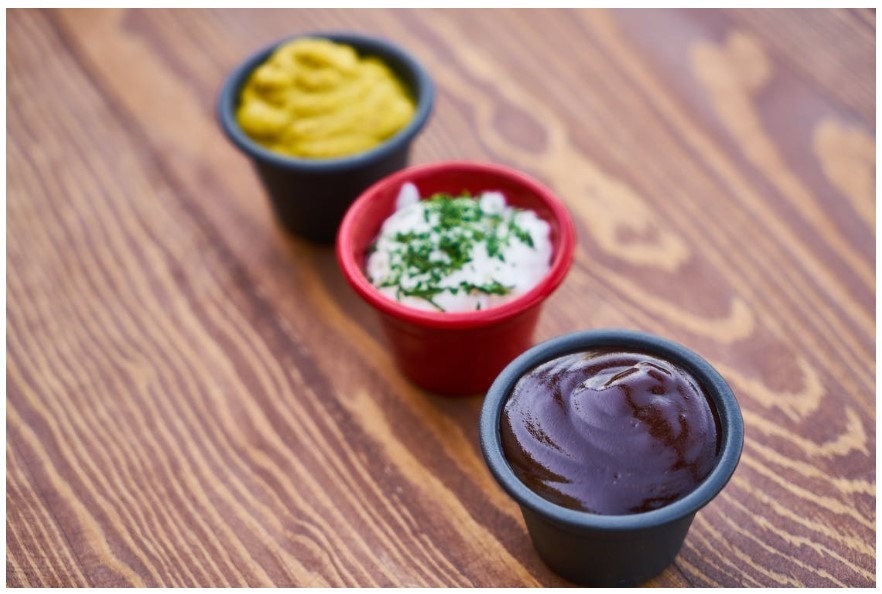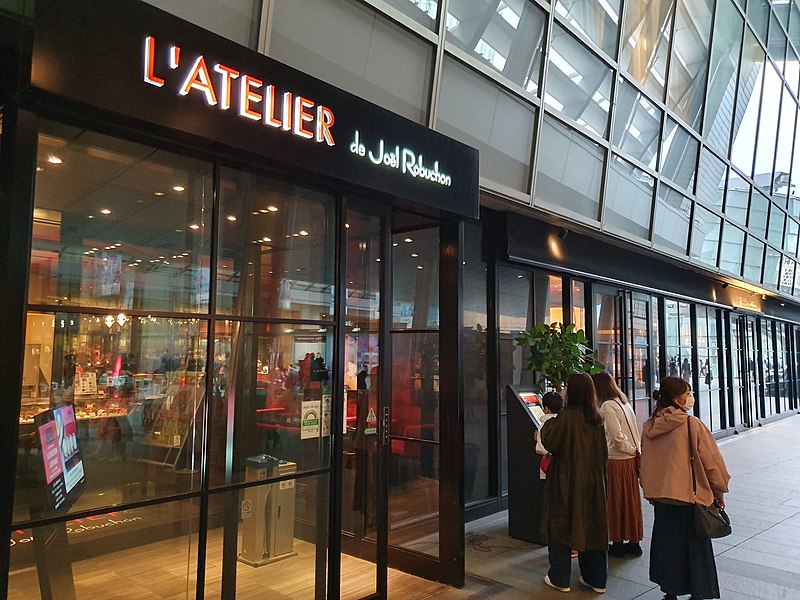In most fields, receiving one star is considered bad. But for chefs, even attaining a single Michelin Star is a lifelong dream. Securing two stars puts one in an exclusive category, and a mere 137 restaurants worldwide have achieved the coveted distinction of a three-star plaque (often beyond the reach of most diners due to their expense).
Therefore, the fact that French chef Joël Robuchon once owned a collection of restaurants that accumulated a staggering total of 32 Michelin stars in 2016 is truly an astonishing feat. It stands as a testament to his remarkable culinary prowess and places him at the forefront of the culinary world.
For his work, Chef Robuchon earned the nickname “Chef of the Century.” He left an indelible mark on the culinary world that continues to resonate even years after his passing. Let’s delve into the extensive reach of his culinary empire and provide insights into the humble beginnings of the chef who holds the esteemed record for the highest number of Michelin Stars ever awarded.
Early Life
Joël Robuchon was born into a working-class family in Poitiers, France (south of the Loire Valley), on April 7, 1945. He was one of the four children of a bricklayer. Robuchon originally wanted to be a priest, so he studied alongside the nuns at the Châtillon-sur-Sèvre seminary in Deux-Sèvres. While at the seminary, he preferred to spend his time helping the nuns prepare food in the kitchen rather than spending time reading and studying the Bible, and there he discovered his true calling. He entered the restaurant world at the age of 15, starting as a pastry chef at the Relais of Poitiers Hotel before working his way up the ranks.
Career Success and Jamin
Robuchon was a perfectionist with a strong work ethic, and by age 30, he was running the kitchen at the Concorde Lafayette Hotel, where he managed a team of 90 cooks and orchestrated the preparation of thousands of meals each day. It was during this period that his professionalism, confidence, precision, and culinary ingenuity became widely recognized. In 1976, he won the Meilleur Ouvrier de France (Outstanding French Craftsman) award for his craftsmanship in culinary arts.
After departing from the Concorde, he served as the Executive Chef and Food and Beverage Manager at the Hotel Nikko, where he earned his first two Michelin Stars. In December 1981, he embarked on a new venture by opening his first restaurant named Jamin, which was located near the Eiffel Tower.
It was there in Jamin that he perfected his famous mashed potato recipe (the key is the 2:1 potato-to-butter ratio). In a groundbreaking feat, Jamin swiftly ascended the ranks of gastronomy. Within its first year, the restaurant was awarded one Michelin Star, followed by two Stars in its second year and an unprecedented three Stars in its third year. In 1990, he was given the prestigious title of “Chef of the Century” by the French restaurant guide Gault Millau, which became a testament to his unparalleled culinary prowess.
Jamin’s continued success over the next decade prompted Chef Robuchon to open another restaurant in 1994, bearing his own name and situated on Avenue Raymond Poincare. That same year, his restaurant Jamin was honored as the “Best Restaurant in the World” by the International Herald Tribune.
Retirement
Upon reaching the age of 50 in 1995 – at the pinnacle of his career – Chef Robuchon announced his retirement to catch up on the life that he missed out on while standing in front of the stove all his life. While retired, he also chose to dedicate his efforts to mentoring and training aspiring chefs.
In 1996, he hosted the French television food program “Cuisinez Comme Un Grand Chef” for a period of four years. Alongside his friend Guy Job, he co-created the television show “Bon Appetit Bien Sur” in 2000, where he imparted cooking lessons. The show ran for ten years and served as a platform for his subsequent endeavor, “Planete Gourmande,” which he began hosting in September 2011.
Atelier Concept and Restaurant Expansion
In 2003, Joël Robuchon decided to come out of retirement and introduce his innovative Atelier concept, a chain of restaurants that took inspiration from tapas bars and sushi counters. This unique dining experience blended elements of fine dining with a casual atmosphere. That year, he opened the first two L’Atelier de Joël Robuchon restaurants in Paris and Tokyo.
The Atelier concept embraced an inclusive approach, devoid of dress codes. It provided a communal space where food enthusiasts from all walks of life could gather around an open kitchen counter. This arrangement allowed everyone to interact with the cooks and one another.
In 2005, he expanded the L’Atelier de Joël Robuchon concept to Las Vegas, followed by subsequent locations in New York, London, and Hong Kong within a year. The restaurant achieved the prestigious honor of three Michelin stars in 2008. Additionally, he opened his first Japanese restaurant, Yoshi, in Monaco.
In 2011, he introduced Southeast Asia’s inaugural Joël Robuchon Restaurant in Singapore, alongside the opening of L’Atelier de Joël Robuchon adjacent to his eponymous establishment in Resorts World Sentosa. This restaurant was awarded three stars in the Michelin Guide Singapore in 2016, making it the sole restaurant in the city-state to achieve this distinction. He re-entered the New York dining scene in 2017 with an updated L’Atelier de Joël Robuchon.
In 2018, he embarked on a new project: the establishment of the Institut International Joël Robuchon, a gastronomy and hospitality school in Montmorillon, France, with plans for its opening in 2019. However, he left it unfinished when he died in 2018.
Death
The revered chef passed away on August 6, 2018, in Geneva, Switzerland, due to complications of pancreatic cancer. The culinary community mourned the loss, yet his restaurants worldwide continue to thrive, ensuring that his legacy endures.
At the time of his passing, Robuchon’s dining empire expanded from Las Vegas to Shanghai. He embraced his status as a celebrity chef, sharing his expertise through books and popular French cooking shows, thereby passing on his knowledge to aspiring chefs. Unfortunately, an ambitious project close to his heart, an international cooking institute in Montmorillon, France, intended to nurture the culinary elite of the future, remained unfinished, as reported by the AFP.
Tributes from fellow chefs and grateful diners poured in upon the news of Robuchon’s passing. French President Emmanuel Macron expressed his sentiments in a statement, recognizing how Robuchon’s name and style had become synonymous with French cuisine worldwide. His culinary artistry symbolized a way of life, an unwavering commitment to excellence, and a testament to the richness of culinary traditions.
Robuchon’s Legacy
Besides his many accolades and Michelin stars, these are Robuchon’s legacy to the culinary world:
His back-to-basics approach
Partly influenced by his humble background, Joel Robuchon perceived the world of fine dining as somewhat stifling and sought to reintroduce a more down-to-earth experience. His culinary philosophy embraced simplicity, favoring uncomplicated dishes like creamed cauliflower and ravioli, and he avoided too many flavors at once. The renowned chef revolutionized the fine dining world by not succumbing to the established norms of French cuisine. He defied the starched formality often associated with fine dining experiences, rejecting unnecessarily complex techniques and recipes.
Instead, the chef focused on simplicity, emphasizing the innate flavors of exceptional ingredients and elevating hearty cuisine to new heights. He said in 2014, “The older I get, the more I realize the truth is, the simpler the food, the more exceptional it can be. I never try to marry more than three flavors in one dish. I like walking into a kitchen and knowing that the dishes are identifiable and the ingredients within them easy to detect.”
Also, his meals were served in generous, hearty portions, in contrast to the trend of having small, pretentious portions in high-end restaurants.
His mashed potatoes
One of the most prevalent misconceptions in the culinary realm is that mashed potatoes (pommes purées), a seemingly basic dish, are uninspiring. However, when crafted by the hands of Robuchon, this classic favorite became a fine work of art.
Robuchon’s rendition of mashed potatoes was deemed so extraordinary that critics often described the act of consuming it as an overwhelmingly “emotional” experience. Despite the simplicity of the dish, it was the elevated proportion of butter that gave his pommes purées with an exceptionally creamy texture and a taste that bordered on the divine.
The recipe may appear simple – it calls for two pounds of ratte potatoes (a small French variety known for its firm texture and nutty taste), one pound of butter, a ¼ cup of whole milk, and salt to taste. However, it is all about the technique. The potatoes are boiled whole, peeled, and then meticulously passed through a food mill. The resulting fluffy potato consistency is gently dried over a low flame before gradually adding butter. This crucial step eliminates any excess moisture so that the final mash is neither sticky nor loose. Ideally, the end result is a smooth and delicately whipped puree, exquisitely soft and barely holding its shape, akin to the texture of gently whipped cream. This dish serves as a testament to Chef Robuchon’s remarkable ability to elevate even the simplest ingredients through his unwavering precision and attention to detail.
Equally iconic is the presentation of the potato puree. Often, a dollop of the exquisite mash is elegantly placed beside the main course on the plate. Additionally, a small crock or copper pot brimming with more of the luscious mashed potatoes is always thoughtfully offered on the side, ensuring an ample and indulgent serving for diners.
He helped pioneer post-nouvelle cuisine
Joël Robuchon has undeniably been the most influential French chef of the post-nouvelle cuisine era. From the mid-1980s onwards, he earned the primus inter pares among Paris’ three-star chefs, thanks to his remarkable contributions at Jamin and his eponymous restaurant.
This culinary style, known as “cuisine actuelle,” aims to capture authenticity. Joël Robuchon emphasized the significance of using natural ingredients and seasonal produce, highlighting these principles in his well-received cookbook, “Cooking Through the Seasons.”
Within the pages of this book, Robuchon generously shares 50 of his cherished recipes thoughtfully organized according to the seasons.
The L’Atelier de Robuchon
One of the most remarkable aspects of Joel Robuchon’s career was his unprecedented ability to build an empire, a feat unmatched by any other chef. He embarked on a global journey to explore various culinary traditions, with a particular focus on Japan’s regional cuisine and Spain’s tapas. This exposure breathed new life into his cooking and vision, inspiring him to create a revolutionary restaurant concept. Rather than simply preparing meals for guests, he desired to showcase his culinary artistry directly in front of them. Thus, the renowned L’Atelier de Joel Robuchon empire was born.
To ensure a luxurious ambiance that would complement his products and flavors, the chef enlisted the expertise of Pierre-Yves Rochon to design the space. The iconic combination of red and black at L’Atelier swiftly became a globally recognized symbol of fine dining. Chef Robuchon also believed music was an integral part of the dining experience. He collaborated with conductors Eric Bouchenoire, Eric Lecerf, and Philippe Braun to compose a musical score that harmonized with his cuisine, creating a complete sensory journey for diners. This unique approach gave L’Atelier a distinct advantage over other restaurants.
Starting from its Paris location, the L’Atelier brand has expanded to other prominent cities worldwide, including Las Vegas, New York, London, Hong Kong, Taipei, and Singapore.
His cookbooks
In addition to his ventures in the restaurant industry, television hosting, and establishing his culinary legacy, Chef Joël Robuchon also made significant contributions to the literary world by publishing a series of cookbooks. Several of these titles, such as “Tout Robuchon,” “Simply French,” “Le Grand Larousse Gastronomique,” “My Best, Food and Life,” “Grand Livre de Cuisine,” “French Regional Food,” “Robuchon Facile,” “Le Meilleur & Le Plus Simple de Robuchon,” “Mas Cuisine Pour Vous,” “Larousse Vegetables & Salads,” “Emotions Gourmandes,” “Bon Appetit Bien Sur: 150 Recettes a Faire a la Maison,” and “Le Meilleur & Le Plus Simple de la pomme de terre: 100 recettes,” have been translated into both French and English.
These cookbooks received widespread acclaim and achieved significant commercial success, often dominating best-seller lists worldwide.
Robuchon’s Restaurants
These are Joël Robuchon restaurants present worldwide:
Asia
- Tokyo – L’Atelier de Joël Robuchon (1 Michelin star), La Table de Joël Robuchon (2 Michelin stars), Le Chateau de Joël Robuchon (3 Michelin stars). Robuchon’s restaurants in Tokyo are located in the Château of the Ebisu Garden Place.
- Hong Kong – L’Atelier de Joël Robuchon (3 Michelin stars), Salon de Thé de Joël Robuchon
- Shanghai – L’Atelier de Joël Robuchon (2 Michelin stars), Salon de Thé de Joël Robuchon
- Taipei – L’Atelier de Joël Robuchon (2 Michelin star), Salon de Thé de Joël Robuchon
- Macau – Robuchon au Dôme (3 Michelin stars)
- Dubai – L’Atelier de Joël Robuchon
Europe
- London – L’Atelier de Joël Robuchon (1 Michelin star), La Cuisine de Joël Robuchon (1 Michelin star)
- Monaco – Restaurant de Joël Robuchon (2 Michelin stars), Yoshi (1 Michelin star)
- Paris – L’Atelier de Joël Robuchon (1 Michelin star), La Table de Joël Robuchon (2 Michelin stars)
- Bordeaux – La Grande Maison de Joël Robuchon
North America
- Las Vegas – Joël Robuchon, L’Atelier de Joël Robuchon
- Miami – L’Atelier de Joël Robuchon (2 Michelin stars)



